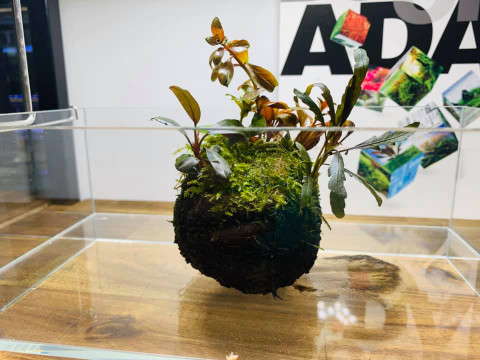 Loading... Please wait...
Loading... Please wait...- Home
- ADA Wabi Kusa Ball & Mat
- Wabi Kusa Substrate Ball With Mixed Plants 10cm
Wabi Kusa Substrate Ball With Mixed Plants 10cm
Product Description
Wabi-Kusa Ball/Mat
Like any true art form, aquascaping has continued to evolve and develop with every new generation that indulges in it. Once aquascapers had mastered the art of creating living underwater gardens they wanted a new challenge. This, coupled with the ever growing, globalising population of the planet and the increasing scarcity of space naturally led the pioneers of aquascaping, like Takashi Amano, to explore a new concept; miniature aquascapes.
These miniature aquascapes provided a new challenge, desperately coveted by aquacapers and allowed even the most space-challenged households to indulge themselves in an aquascape and benefit from the many benefits of aquascapes; natural beauty, increased relaxation, reduced stress levels and a sense of artistic creation combined with a sense of natural science and evolution. These miniature worlds came to be known as ‘Nano’ aquascapes, and were closely followed by even smaller versions dubbed ‘Pico’ aquascapes.
There is no literal translation of ‘Wabi-kusa’ in the English language. ‘Wabi’ denotes something aesthetic, imperfectly beautiful and natural (like in wabi-sabi). ‘Kusa’ means ‘grass’ or sometimes ‘plant’. Therefore ‘Wabi-kusa’ cannot be translated literally. It denotes something natural, beautiful, sweetly imperfect and involving plants. The English language is clearly not conceptual enough to have evolved a single word to express all those connotations, which is probably why we have kept the name ‘Wabi-kusa’; to maintain the simple elegance of the concepts the Japanese name denotes.



